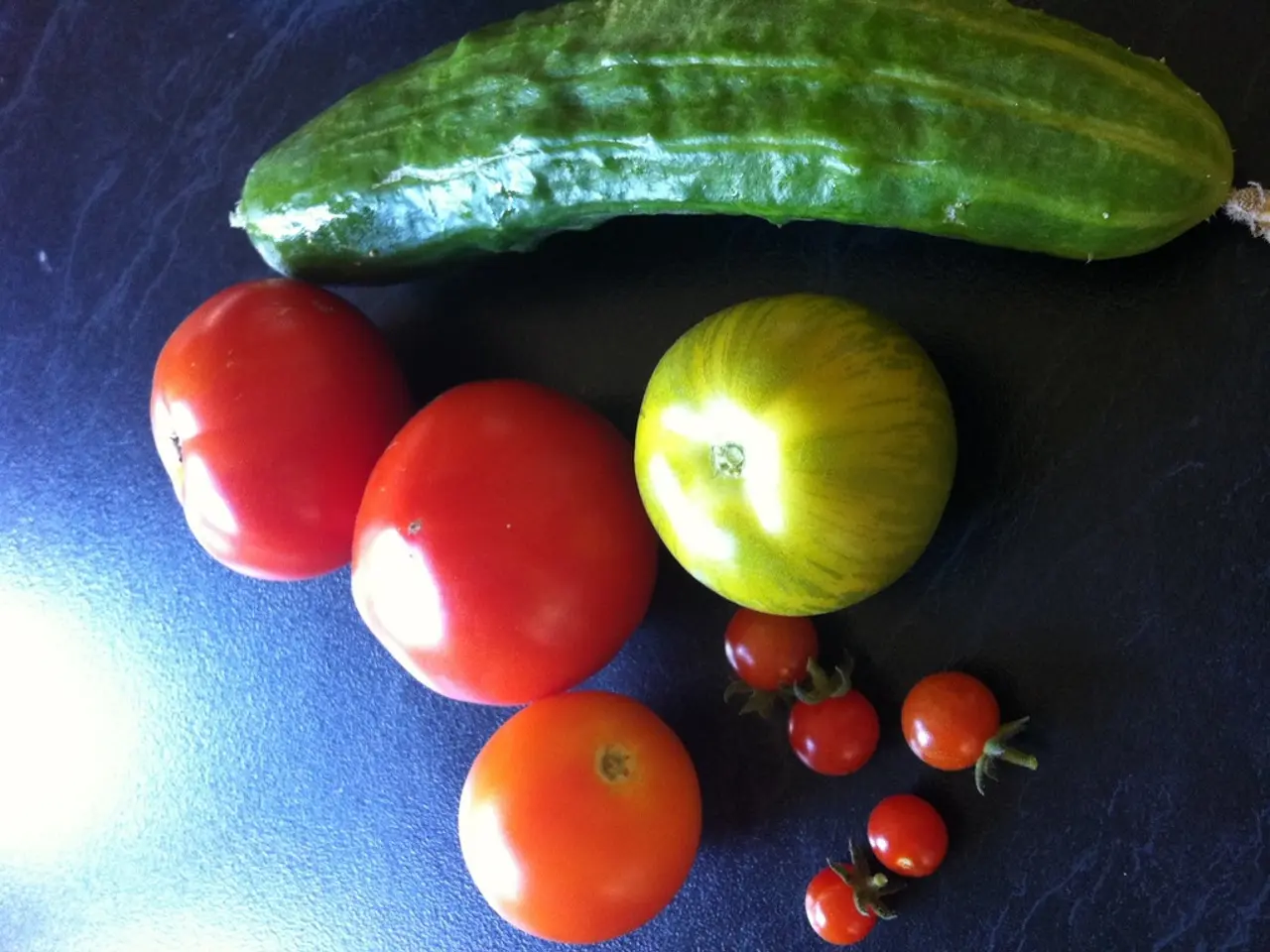Assessing Vegetable Quality Through °Brix Measurement: A Comprehensive Look at the Method
In the world of agriculture, degrees Brix (°Brix) has become a valuable tool for farmers, producers, and consumers alike. This simple yet effective method provides an accurate measure of the sugar content in fruits and vegetables, a key factor in determining sweetness, maturity, and overall quality.
Degrees Brix is a measurement of the percentage by weight of dissolved solids (mainly sugars) in the juice or sap of fruits and vegetables. The higher the °Brix value, the higher the sugar content, and consequently, the sweeter the produce. For instance, a watermelon with a °Brix value of around 10 is considered standard, while values of 11–12 indicate extra sweetness, making it a reliable measure for selecting ripe and flavourful produce.
The measurement of °Brix is carried out using a refractometer, a device that measures the refractive index of a liquid sample. When light passes through the fruit juice, the degree to which the light bends (refracts) changes depending on the concentration of dissolved solids. This refractive index is then translated into a °Brix value, representing grams of sugar per 100 grams of solution.
Modern digital refractometers often include automatic temperature compensation to improve accuracy and ease of use in varying field conditions. Measurement steps typically include extracting juice from the fruit or vegetable, placing a drop of juice on the prism surface of the refractometer, and reading the °Brix directly on a calibrated scale for analog models or viewing a digital readout on electronic models.
Field managers use °Brix values to assess the harvest readiness of grapes, melons, and other crops. This information is crucial for optimising harvest timing, irrigation, and quality control. The °Brix scale, developed by Adolf Brix in the mid-1800s, allows growers and others to compare varieties and production practices across farms, harvest dates, years, and seasons.
Grocery stores and restaurant produce managers also use °Brix values as an indicator of potential crop quality. Buyers of crops used to make various products routinely measure °Brix of fresh or stored crops before they are used in the making of beer, wine, juice, sauce, refined sugar, and other products.
It's important to note that °Brix readings are most useful when taken often to identify trends. Refractometers can be handheld or bench-top, with handheld refractometers being the most convenient for on-the-spot measurements. However, °Brix measurements are only as strong as the sampling procedure and instrument that produced them.
For vegetable growers, managers, and handlers, measuring °Brix can be beneficial as it is a straightforward, objective, and relatively inexpensive measurement. However, it's crucial to remember that °Brix values are affected by genetic and management factors, and management can impact °Brix in predictable ways, but values will vary with year, season, environment, and other factors.
In conclusion, the use of degrees Brix in assessing fruit and vegetable quality offers numerous benefits, from optimising harvest timing and quality control to selecting ripe and flavourful produce. With regular measurements and careful management, this simple yet effective method can significantly enhance agricultural practices and consumer satisfaction.
- Degrees Brix provides an accurate measure of the sugar content in various crops, including fruits and vegetables, which influences sweetness, maturity, and overall quality.
- The higher the degrees Brix (°Brix) value, the higher the sugar content, making produce sweeter, such as a watermelon with a °Brix value of around 10 being considered standard.
- A refractometer, a device used for measuring the refractive index of a liquid sample, is employed to determine degrees Brix.
- The°Brix scale, developed in the mid-1800s, is useful for comparing varieties and production practices across farms, harvest dates, years, and seasons.
- Grocery stores and restaurant produce managers use degrees Brix as an indicator of potential crop quality, particularly for crops used in the production of various products, including beer, wine, juice, sauce, refined sugar, and others.
- For vegetable growers, degrees Brix measurements can be beneficial, offering a straightforward, objective, and relatively inexpensive method for assessing crop quality and optimizing agricultural practices.




